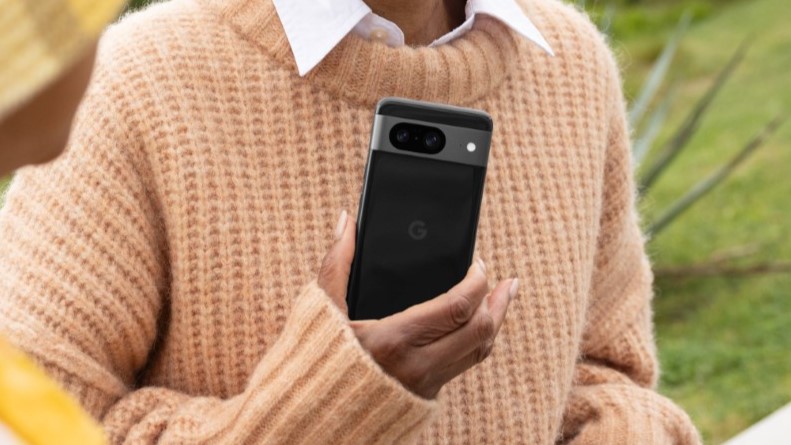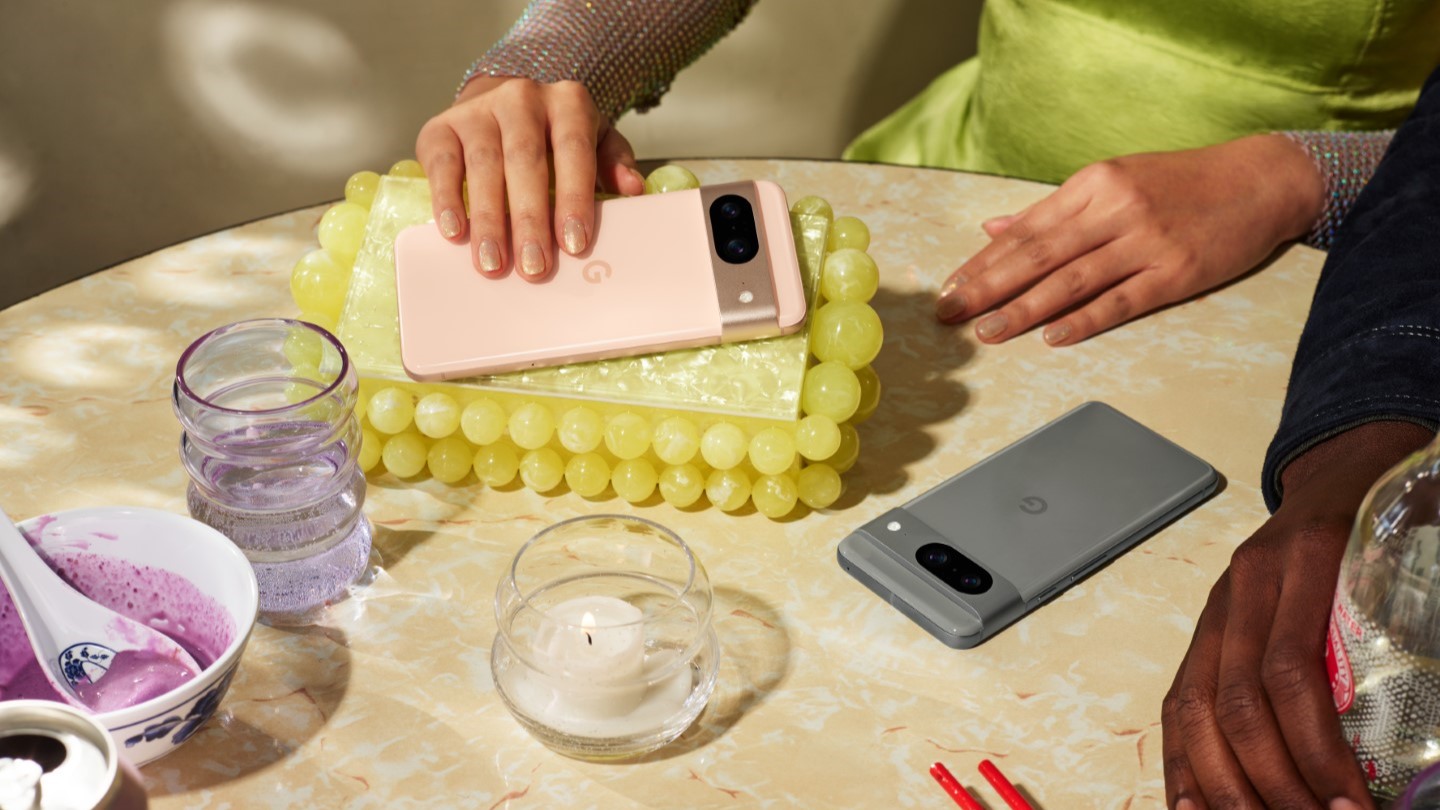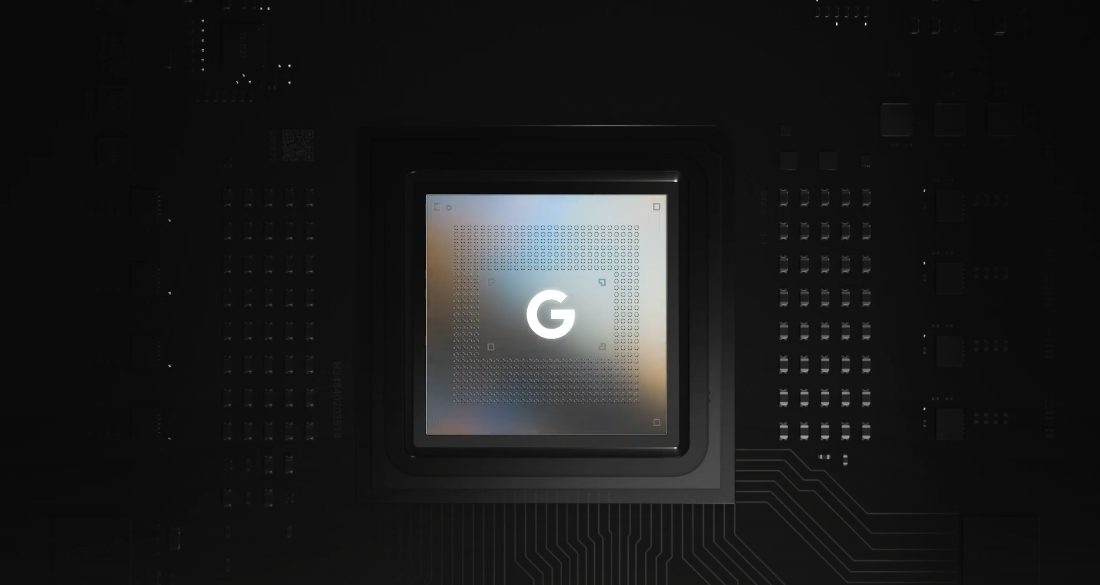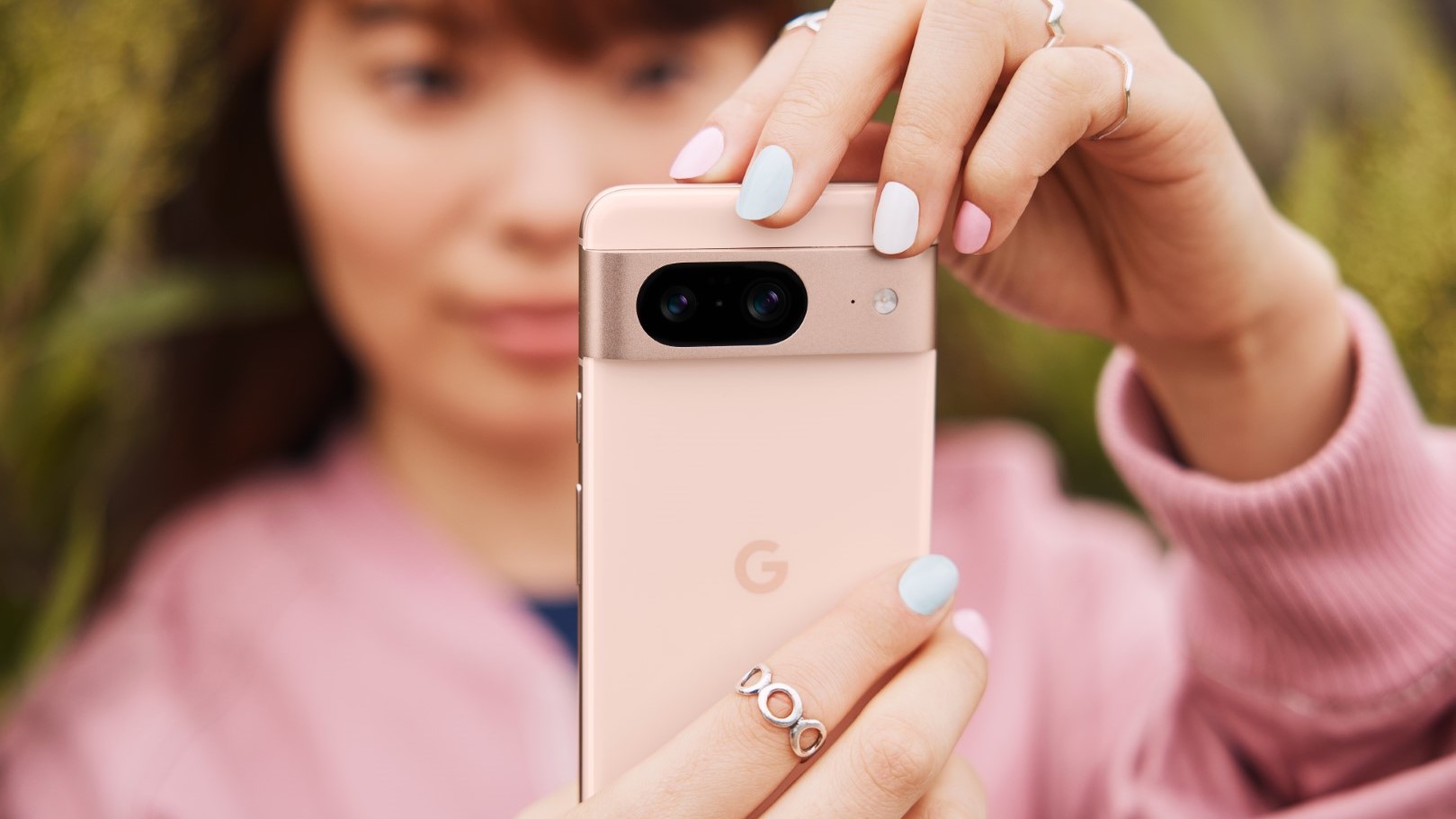Google just launched its latest Pixel 8 and Pixel 8 Pro, which look highly competitive thanks to improved cameras and Google’s Tensor Gen 3 chipset. Although the styling remains the same, and to be honest, it is one of my favorites thanks to its clean, practical design and unique camera module on the rear.
There is something different about the Pixel lineup that makes it stand out and creates an air of “I need to try this out.” When you add its capability to its highly competitive price point of $699, the Pixel 8 could give Apple and Samsung fits and take a bite out of OnePlus’s affordable flagship market share.
We put this to the test by comparing the Pixel 8 with the OnePlus 11. Thanks to all the leaks that seem to follow every Google product ever developed, we have a pretty good idea of how the numbers stack up beyond the specs, but we’ll have the full results soon as we get to work on our Pixel 8 and Pixel 8 Pro reviews.
Google Pixel 8 vs. OnePlus 11: Specs
| Spec | OnePlus 11 | Google Pixel 8 |
|---|---|---|
| Screen size | 6.7 inches | 6.2 inches |
| Resolution | 1440 x 3216 pixels | 1080 x 2400 pixels |
| Refresh rate | 120Hz | 120Hz |
| Storage | 128GB, 256GB, 512GB, | 128 GB / 256 GB |
| RAM | 12/16GB | 8GB |
| CPU | Snapdragon 8 Gen 2 (4 nm) | Google Tensor G3 (4nm) |
| Cameras | 50MP wide, 48MP ultrawide, 32MP telephoto | 50MP wide, 12MP ultrawide,10.5MP Front facing camera |
| Battery capacity | 5000 mAh with 100W fast charging | 4,575 mAh |
| Design materials | Gorilla Glass and aluminium | Gorilla Glass and aluminum |
| Connectivity | USB-C | USB-C |
As you can see, the OnePlus 11 gives you a larger 6.6-inch 1440 x 3216 display. The Pixels 8’s display comes in at 5.9-inches with 1080 x 2400 resolution with both rated at 120Hz of refresh rate. The Pixel is also rated at up to 2,000 nits of peak brightness with the OnePlus 11 coming in at 1,300 nits of peak brightness. When using your phone outdoors in sunny conditions, you will want the extra brightness, but I have never had an issue with my OnePlus 11.
Both are made of aluminium and sturdy Gorilla glass. The one immediate difference is in available RAM, with the OnePlus coming with 12GB of RAM which you can expland up to 16GB of RAM within the settings. The Pixel 8, comes with 8GB of RAM, but we know Google is assisting said RAM with AI to enhance performance. However, 16GB is double the ram.
Having shot with the Hasselblad-tuned OnePlus 11 cameras since February, I can say it is my daily go-to. Also, the 11’s camera nodule houses a 50MP wide, 32MP telephoto, and 48MP ultrawide lens set wh, whereas the Pixel 8 comes with a 50MP wide and a 12MP ultra-wide, and there isn’t a separate telephoto lens to speak of.
The Pixel 8 has a 10.5MP wide front-facing camera for selfies, and the OP 11 has a 16MP front-facing camera. So, on paper, this gives OnePlus the edge, but the proof is in the images, and we won’t know until we conduct a full review. Pixel devices have been known to shoot excellent photos and video, so we’re excited to find out.
Google Pixel 8 vs. OnePlus 11: Price

Google priced the Pixel 8 to sell off the shelves at just $699 when you consider its specs, lovely design, and camera capabilities. If it weren’t for a recent price drop, it would be the same as the OnePlus 11, which can now be purchased for $599 for the 128GB model.
Considering that the Tensor Gen 3 is a brand new chipset that may be equal to the Snapdragon 8 Gen 2, this could be a win for Google, or it could be seen as Google is catching up quickly to the more established Qualcomm. Either way, both devices are priced to give consumers some flagship level specs at an affordable price.
- Google Pixel 8: $699
- OnePlus 11: $599
Google Pixel 8 vs. OnePlus 11: Design

- Google Pixel 8 has a satin aluminum frame and Gorilla glass and is available in Hazel, Rose, and Obsidian. It features slim, symmetrical, rounded bezels that snuggle its 6.2-inch display, giving it a slightly curved feeling, although Google has moved to a flat panel design.
- OnePlus 11 is known for its sturdy aluminum build, massive 6.7-inch Gorilla glass display with elegant design, and unique round camera nodule on the rear.
The one thing I enjoy about Google is its willingness to tweak its design, as seen with the Pixel 8 and 8 Pro. Google famously leaked its upcoming design changes and 360-degree glory on a Pixel Simulator. Which Jason England recently discussed in our other comparison piece. He noticed some exciting changes and styling upgrades that pushed the Pixel’s design up a notch.
Google decided to lose the curved display design in favor of a more flat panel while reassigning the curved element to the body itself, thus creating a sleeker, more eye-pleasing design. The 6.2-inch display with a 20:9 aspect ratio is meant to create an immersive experience for the user.
| Phone | Google Pixel 8 | OnePlus 11 |
|---|---|---|
| Size | 5.9 x 2.8 x 0.4 inches | 6.42 x 2.92 x 0.33 inches |
| Weight | 6.6 oz | 7.23 oz |
Our OnePlus 11 remains eye-catching and stylish thanks to its unibody design, creating a massive screen-to-body ratio to enhance the 6.7-inch display’s curvature. The curved waterfall edges give the OP 11 an endless display vibe that I enjoy. As I’ve said previously, “beautiful waterfall Corning Gorilla Glass Victus display gently cascades over the edge, smoothly meshing with the curved contours of the device’s aluminum frame.” Also, OnePlus kept everything from previous generations that fans of OnePlus love, like the ultra-popular slider.
Google gives consumers a great variety of color choices, and the Pixel ecosystem of cases and accessories is extensive. It does surpass what you will find for the OnePlus 11.
Google Pixel 8 vs. OnePlus 11: Battery life
- Google Pixel 8 Pro: 4,575 mAh
- OnePlus 11: 5,000 mAh
Although the OnePlus 11 features a larger battery, probably thanks to it being a larger device, that sometimes doesn’t translate into better battery life. Especially when you consider Google’s use of AI to improve the overall performance in every area of the Pixel lineup.
However, on the Android side, a bigger battery usually wins these battles. We won’t know for sure until we get the Pixel 8 into our lab for testing. Still, we are hoping to see all-day battery life after the Pixel 7 somewhat disappointed in that regard. There’s reason for hope as the Pixel 7a managed to break the chain of weak battery life for Pixels in our testing and it is also worth noting that Pixel battery life tends to improve over time as it adjusts to your usage. The Google Pixel also features wireless charging, something the OP 11 does not come with, and some hold against it.
I am not a fan of wireless charging and have rarely used it, regardless of which device I use. I prefer OnePlus’s approach to fast charging as the OP 11 comes with an 80W SUPERVOOC charger that fully charges up the OP 11 in 25 minutes or less in my experience. So, it remains a personal choice, but Qi charging is not a make or break feature for me. Pixel 8 does have a fast charging feature that will get your device to 50% in 30 mins.
Google Pixel 8 vs. OnePlus 11: Display

- OnePlus 11: 6.7 inch LTPO3 AMOLED 1440x3216px resolution, 20.1:9 aspect ratio, 525ppi; Always-on display with adaptive 120Hz refresh rate.
- Google Pixel 8: 6.2-inch (1080 x 2400) OLED at 428 PPI with adaptive refresh rate up to 120Hz
Google Pixel 8 has a 6.2-inch display with (1080 x 2400) OLED at 428 PPI, with a 20:9 aspect ratio. The sturdy Corning Gorilla Glass panel features an adaptive refresh rated for 60-120 Hz and is rated for up to 2,000 nits of brightness and HDR support. It should be a solid display with solid contrast, excellent color, and shine for most users. Also, many will be happy that Google has moved from the curved edges to a flat panel.
The OnePlus 11’s AMOLED (3216 x 1440) 6.7-inch display is HDR10+ certified and Dolby Vision capable, with native support for 10-bit color depth, an adaptive 1Hz – 120Hz refresh rate, and a 20.1:9 aspect ratio. Most importantly, it is crisp, colorful, and great to watch content on. The OP 11’s panel is rated for up to 1,300 nits of brightness, which is lower than the Pixel 8 panel. However, over nine months of usage, I have never found the panel dim or unable to adjust to outdoor lighting, even on the sunniest days.
Both displays will provide users with smooth, tear-free performance, ample brightness, and excellent color saturation and contrast. We won’t fully know until we have our Pixel 8 review unit in hand and have it tested.
Google Pixel 8 vs. OnePlus 11: Performance

- OnePlus 11: Qualcomm Snapdragon 8 Gen 2 (4nm) Octa Core CPU
- Google Pixel 8: Google Tensor G3 with nine-core CPU, and Immortalis-G715s MC10 GPU
The OnePlus 11’s Snapdragon 8 Gen 2 chipset has never disappointed, always blazing fast and always ready to tackle everything from document pushing to gaming impeccably. However, I am excited to see how the Tensor G3 will perform and if it can get close to Qualcomm’s history of performance. I also want to point out that this is just the third iteration of Tensor chips, and even if it just comes close, it’s a massive step in the right direction.
As our intrepid Jason England has pointed out, “Google’s Tensor G3 chipset is built on a 4-nanometer process, and looks like it will get an impressive update in performance too. It starts with a nine-core CPU with a top speed of 3.00GHz, and the 10-core Immortalis variant of the G715 GPU could also unlock ray tracing capabilities too.” When you add that to Google’s use of “Rio” AI, and machine learning, the Tensor G3 could be a performance star in the making.
That all expressed, benchmarks were leaked yesterday, and during Geekbench 6, the Tensor single-core score of 1,760 and a multi-core score of 4,442. Now those are leaked figures and we’ll want to see how it does in our lab, but it’s not a shocking result. The Snapdragon 8 Gen 2 scored 1,982 single-core and 5,202 multi-core in the same test, so Google is catching up, but Qualcomm will soon unleash the Snapdragon 8 Gen 3, so it’ll leave Google in the dust again shortly.
Some would say close, but no cigar, but as a professional, I will state that most users won’t notice the difference, and the Tensor G3 is a huge deal and a vast improvement that Google should be proud of. Unless all you do is play triple-A titles on your phone all day, while solving the world’s problems using complicated data sets and Vulcan mathematical equations to create warp fields, the Pixel 8 will pack more than enough power for you.
Google Pixel 8 vs. OnePlus 11: Cameras

- Google Pixel 8 Pro features upgraded 50MP main camera with up to 8X High Res zoom, and a 12MP ultrawide with 125.8 degree field of view.
- The OnePlus 11 comes with a 50MP main camera, a 32MP telephoto and 48MP Ultrawide.
Lastly, having shot with the Hasselblad-tuned OnePlus 11 cameras since February it is my daily go-to and I remain a big fan. The 11’s camera module houses a 50MP wide, 32MP telephoto, and 48MP ultrawide lens set up whereas the Pixel 8 comes with a 50MP wide, a 12MP ultra wide and there isn’t a separate telephoto lens to speak of, for that you would need to opt for the Pixel 8 Pro. Having three cameras does make a difference.
The Pixel 8 comes with a 10.5MP wide front-facing camera for selfies and the OP 11, comes with a 16MP front-facing camera. So on paper, this gives OnePlus the edge, but the proof is in the images, and we won’t know until we actually conduct a full review. Pixel devices have been known to shoot excellent images and video, so we’re excited to find out.
| Phone | Google Pixel 8 | OnePlus 11 |
|---|---|---|
| Wide camera | 50MP wide (25mm f/1.9) | 50MP wide (24mm f/1.78) |
| Ultrawide camera | 12MP ultrawide | 48MP ultrawide (13mm f/2.2) |
| Telephoto camera | N/A | 32MP telephoto (77mm f/1.78) w/ 3x optical zoom |
The only way to truly compare the cameras on these devices is to get out and shoot with them. I am expecting the Pixel to more than hold its own and with the help of AI maybe even surpass the OnePlus 11’s Hasselblad tuned cameras.
The Pixel 7 series cameras produced excellent photos, and video and have remained a favorite of many people in the tech review arena. I have recently used a Pixel Fold, and have really enjoyed the camera performance so I am guessing we will see similar results, with some improvements in focus and color science.
The OnePlus 11 wins for color science in my opinion, although sometimes I notice heavy pixelation when using the telephoto lens. It has improved with a recent update. I’m looking forward to putting the two up against each other to analyze the results.
Outlook
The OnePlus 11 is the phone that had me retire my iPhone. It brings flagship-level specs and design at an affordable price point. What OnePlus does is very impressive, and although the Pixel 8 is truly nipping at its heels to become the king of affordable flagships, we can’t signal a final victor until we run the 8 and 8 Pro through their respective paces.
I love OnePlus’s Oxygen OS Android skin, it’s my favorite, but Google’s version of Android is so clean, running super smooth, and without the added distraction of many other Android skins. When you add its AI-driven features, the Pixel 8 will be a formidable phone that will continue to improve and impress with each iteration.
With the Pixel’s lineup history of excellent camera performance, the Pixel 8 series will give the OnePlus 11 a run for its money and put a little fear in the iPhone 15. Why? Because sometimes a Ferarri is overkill, and you need a dependable everyday performer, like a Honda Accord. The same rule applies here.
 notebook.co.id informasi dan review notebook laptop tablet dan pc
notebook.co.id informasi dan review notebook laptop tablet dan pc